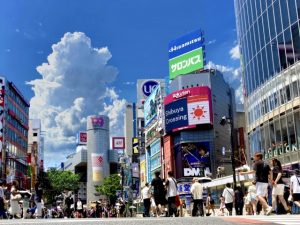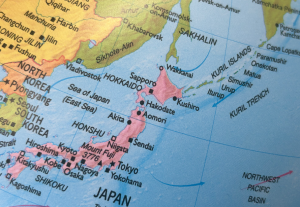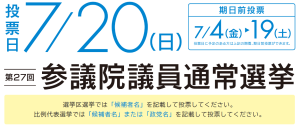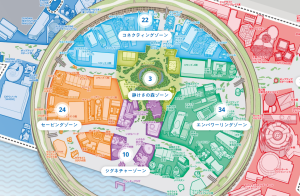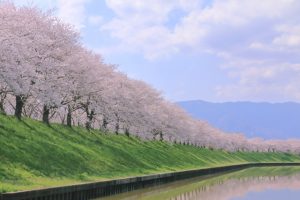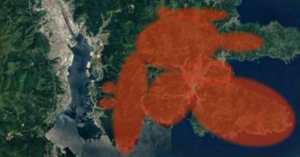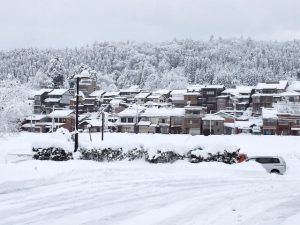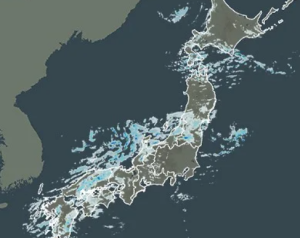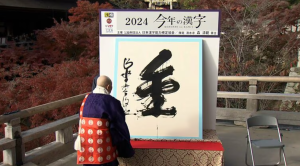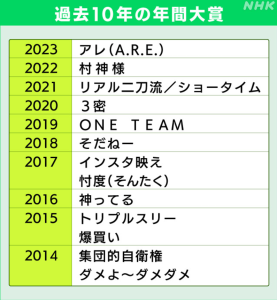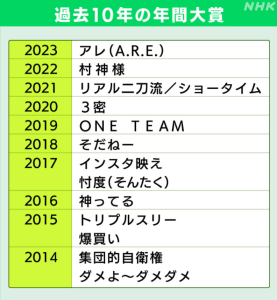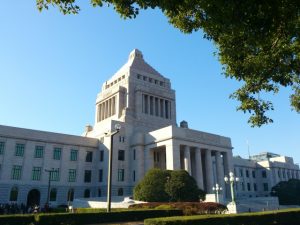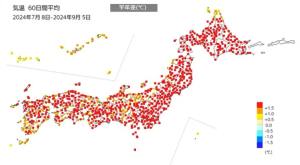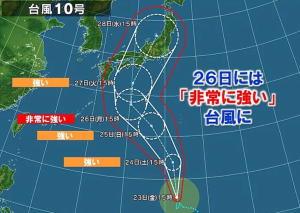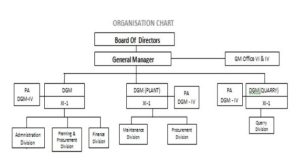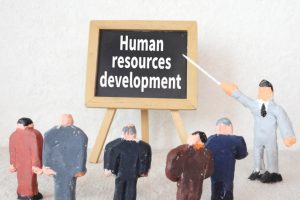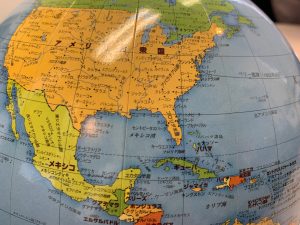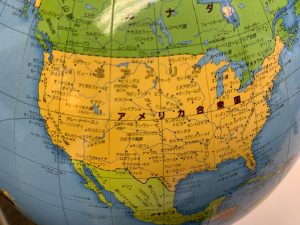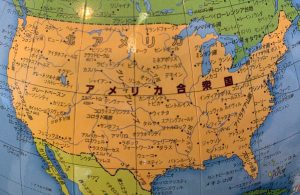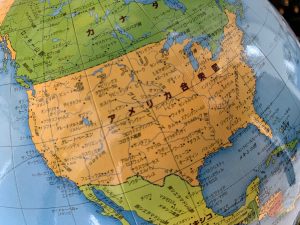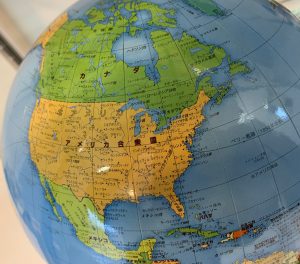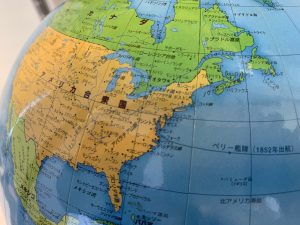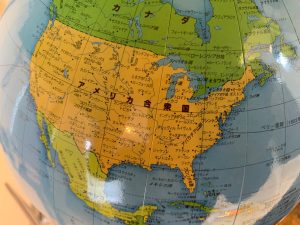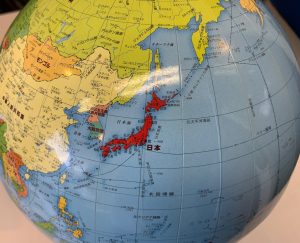Re: A news item and subject which I just want to check out (99) July 14, 2023
Although the rainy season started about one week earlier than usual this year, the rainy season has not yet ended. Linear rainbands that brought heavy rainfall in a short period of time occurred in three prefectures of Fukuoka, Ooita, Saga on July 10, and human and material damage continued to occur due to large-scale mudslide, flooding, and so on. And heat stroke is occurring frequently in various parts of the country every day. When I was young, a symptom caused by hot heat of the sun was called “sun stroke”, but it may be called collectively “heat stroke” now, because heat stroke can also occur indoors. Anyway, it seems important to consistently replenish water.
It seems that heat wave impacts are also spreading in the world, and extreme weather such as drought and water damage is on the rise. According to the World Meteorological Organization, WMO, average global temperatures are at records high, and there is a possibility that temperatures will rise even further this summer, because “El Nino phenomenon” that is the increase of water ocean temperature off the coast of Peru, South America has occurred for the first time in four years.
I traveled by the route of Osaka, Tokyo, Nagano, Kanazawa, and Osaka the other day. I rode on the JR Osaka Loop Line, Tokaido Shinkansen, Hokuriku Shinkansen, Hokuriku Line, and Tokaido Line. Every route was packed with foreign tourists carrying large bags. The number of inbound guests in 2019 before the corona infection is 31.88 million. After that, the number dropped sharply to zero due to the influence of the corona, but because of easing of restrictions in May this year, I hear that inbound guests have also returned to a little less than 60 % at the Kansai Airport. But labor shortage or the problem where you can’t catch a cab becomes apparent on the receiving side, due to the decline in the working population and aftereffects of personnel cuts in the corona recession time. The government is setting a goal of 60 million visitors to Japan in 2030, but I think the current infrastructure or receiving system is very unmanageable and it is inevitable that we will fall into over tourism, negative impact of over-acceptance on citizen’s daily lives.
■■I write down what I attract my attention and things that made me think recently.
■What will the economy look like in the future? :
There were some descriptions regarding Japanese economy in recent newspaper articles. One of the same day’s newspapers was “the Regional Economic Report” called Sakura Report released by the Bank of Japan in July. The headline was “raising economic judgement in three regions”, and it seemed that consumer consumption recovery leads to improvement. However, there was “Economic Watchers Survey” released by the Cabinet Office next to the article, and it said, “street corner economy deteriorated for the first time in five months”. And there was one more article “the number of corporate bankruptcies in the first half of 2023 increased by 32 % year on year”. And the contents are that increasing bankruptcies are inevitable, because repayment of the so-called “zero zero financing” will be in full swing in the future.
And looking at the recent business climate from the logistics side, truck freight transport accounting for a little more than 90 % of domestic freight transport does not increase quantitatively, and the ratio of passing on the increase of the cost like fuel price and so on to shippers is said to be the lowest in industry, and it is financially in a severe situation. And the export decreases quantitatively, and international air freight is continuing year-over-year decline, and the old boom of marine container transport is also gone, and the decline of volume and freight rate is significant, and it symbolizes the stagnation of the global economy.
On the other hand, FRB is continuing to raise interest rates in order to control persistent inflation and trying to cool the economy semi-forcibly in the United States. European countries have also a weak economy due to the impact of interest rate hikes, and concerns about deflation can’t be dispelled in China expected to be a driven force. And the current situation in Asia being highly dependent on China is also not strong enough. Therefore, demand from abroad does not seem to be very promising for the time being. And due to global extreme weather mentioned before, forest fires are happening in Europe, Canada, and the United States, and there is significant damage to agricultural products in China and other countries.
Taking the above into consideration, it is necessary to consider the outlook for the domestic and international economy to be severe.
By the way, I had an opportunity to listen to the lecture by Mr. Masaaki Shirakawa, the former Governor of the Bank of Japan and professor at Aoyama Gakuin University at present, at a meeting on 13. The subject of his address was “my thoughts on financial development at home and abroad”. He listed the following as the true challenges of Japanese economy ①population decline due to aging and declining birthrate ②downward trend of growth rate of productivity ③side effects of low interest rate policy ④the problem of the budget deficit. These were very interesting and empathetic contents.
■I am worried about the shortage of blood donations and “the heart of altruism” is important:
The first floor of the building where my office is located is a place with a lot of people coming and going, and persons with a banner marked “please donate blood” are standing almost every day, and calling for help in blood donation. There is a “blood donation room” of Osaka prefecture on the 25th floor of the same building, and they are the people who work there.
It is said that the shortage of blood donation is growing in Japan every year. The number of blood donors has been around 5 million every year since 2005, but the decline of young people under 30 years old is remarkable, and 1.73 million in 2005 decreased to almost half 0.91 million in 2021. The general reason is “I don’t have time due to busy work or household”, and there seems to be a lot “I don’t want to stick a needle because it hurts” “I feel uneasy somehow” among young people. If the number of people who need blood transfusions increases and the number of blood donors decreases due to declining birthrate and aging population, blood plasma products for transfusion will be not enough. According to a test calculation by the Japanese Red Cross Society, 460 thousand people will not have enough blood in 2035. The age to donate blood is over 16 years old and under 69 years old. I am no longer eligible for age, but Mr. S, my senior assistant aged 67, is continuing blood donation every year, and I am impressed by him. Everyone may face a situation where they need a blood transfusion at any time. Therefore, it is necessary to create “the heart of altruism” from a young age.
There has long been a teaching that “one who is kind to others is sure to be rewarded”. According to the survey by the Agency for Cultural Affairs, about half of Japanese people misuse this proverb as “showing kindness is not for the benefit of the person”. For that reason, it seems that the dictionary is posting while changing the original story to “a kindness is never lost, and goes around for your own”. In fact, these words are a part of poem “one word a day” released in 1915 by Mr. Inazo Nitobe also drawn on the old 5,000 yen note. It says that “The kindness you show to others is not for their sake alone. It is also a comfort to your own heart. Even if you forget the blessings you gave to others, don’t forget the favor you received from others for a long time”.
In any case, we want to cherish “the heart of altruism”.










